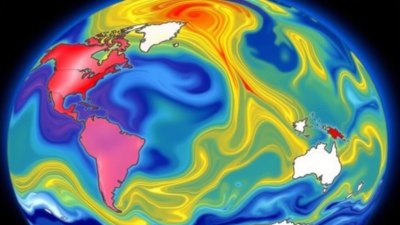The Science Behind Warm Rain Events
Explore the intriguing science behind warm rain events and their impact on weather patterns.

Image by Kireyonok_Yuliya on Freepik
Warm rain events are fascinating meteorological phenomena that occur when atmospheric conditions lead to precipitation at temperatures above normal freezing levels. This article delves into the science behind warm rain events, exploring their mechanisms, effects, and implications for the climate system. We will examine how warm rain is formed, its role in the hydrological cycle, and the implications of these events for agriculture, ecology, and weather patterns.
Understanding Warm Rain
Warm rain refers to rainfall that occurs when the temperature of the atmosphere remains above 0 degrees Celsius at the height where the precipitation is forming. Unlike cold rain, which often involves larger ice crystals or snowflakes melting as they descend, warm rain forms when small droplets combine and grow to a sufficient size to overcome air resistance and fall to the ground. The critical aspect of warm rain is the presence of warm, moist air that rises, cools, and condenses, leading to precipitation.
Formation of Warm Rain
The formation process of warm rain is primarily driven by thermodynamic principles and involves several key components, including humidity, temperature, and upward motion of air. When warm, moist air rises, it expands and cools. As it cools, the moisture in the air condenses into tiny droplets. These droplets collide and coalesce with other droplets, gradually growing larger until they become heavy enough to fall as rain.
A significant factor in warm rain formation is the condensation nuclei—tiny particles like dust, pollen, or sea salt that provide a surface for water vapor to condense upon. In the atmosphere, when sufficient water vapor condenses around these nuclei, it leads to the development of clouds, which are essential for the eventual precipitation.
Types of Warm Rain Events
There are various types of warm rain events, each influenced by different meteorological conditions. Some notable types include:
- Convective Rainfall: Often characterized by localized thunderstorms, convective rainfall occurs due to the intense heating of the Earth's surface, causing rapid rising of warm air.
- Orographic Rainfall: This type of rainfall occurs when warm, moist air is forced to rise over a mountain range, cooling as it ascends and resulting in precipitation on the windward slopes.
- Frontal Rainfall: Warm rain can also occur along warm fronts, where warm air is lifted over cooler air, leading to gradual and steady precipitation.
Warm Rain and Climate
Warm rain events can significantly affect the climate and weather patterns in various regions. They contribute to the redistribution of water within the atmosphere and play an essential role in the hydrological cycle. The presence of warm rain can lead to increased soil moisture, which is crucial for agriculture; however, it can also result in flooding and soil erosion if the precipitation is excessive. Understanding these events is critical for developing effective water management strategies and mitigating the impacts of climate change.
Implications for Agriculture and Ecology
The occurrence of warm rain events can have profound implications for agriculture and ecological systems. For farmers, warm rain can provide essential moisture for growing crops, particularly in regions experiencing drought. The benefits of rain include replenishing groundwater supplies and supporting plant growth. However, excessive warm rain can lead to negative outcomes such as crop damage, soil saturation, and increased vulnerability to pests and diseases.
Ecologically, warm rain events can influence various ecosystems by affecting species interactions, nutrient cycling, and habitat availability. Wetland areas, for example, may experience changes in water levels and salinity due to warm rain, impacting aquatic life and plant communities. Moreover, the timing and intensity of warm rain can also influence seasonal behaviors of wildlife, such as migration patterns and breeding activities.
Warm Rain in the Context of Climate Change
Climate change is expected to impact weather patterns globally, including the occurrence and intensity of warm rain events. Rising global temperatures may lead to increased evaporation rates, resulting in a greater amount of moisture in the atmosphere. This excess moisture can enhance the frequency and intensity of warm rain events, potentially leading to more extreme weather conditions, such as heavy rainfall and flooding.
Furthermore, changes in ocean temperatures and currents can alter weather patterns, affecting the distribution of warm rain events. Regions that previously experienced mild rainfall may find themselves facing more intense and frequent warm rain as climate conditions shift, further complicating water management and agricultural practices.
Understanding the science behind warm rain events is crucial in the context of our changing climate. These events play a vital role in the atmospheric hydrology, influencing weather patterns, agriculture, and ecological systems. As we move forward, improving our understanding of warm rain formations and their impacts will be essential for adapting to the challenges posed by climate change.











